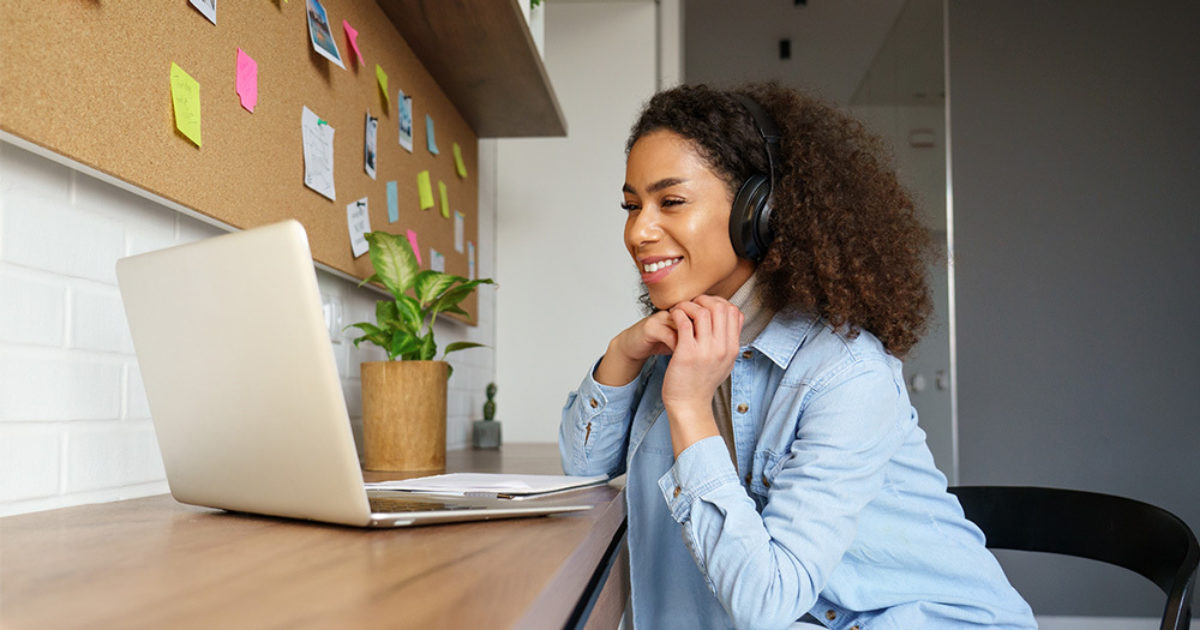Best Practices for Video Conference Calls
How to look professional when video conferencing for work and school
Video by: Jeshua Mauldin
Written by: Lauryn Feil

COVID-19 has forced us all to be resourceful, like finding ways to work out at home, get creative, like making DIY face masks for the whole family, and embrace flexibility, like adjusting to homeschooling and being productive while working from home. But one thing most of us have had to navigate at some point in this new environment, and could still use some pointers on, is the infamous video conference call.
Whether it be for work, school, or catching up with friends and family, video conferencing has become an important part of our daily lives. You’ve likely giggled while watching someone new figure out how to work video conferencing, observed some interesting home environments and other happenings in the background, or heard someone beg their kids for a moment of silence. These are some of the challenges that come with navigating this new normal. While it can be tempting to roll out of bed mere seconds before your next scheduled video conference, the truth is, if you’re jumping on a video call for work or school, your appearance really does matter.
Explore these seven tips for looking and sounding your best during your video conference call:
1. Know your angles.
Camera positioning makes a real difference in professional appearance. If your camera is lower than eye level, your audience may have an unflattering view right up your nostrils – yikes! If your camera is positioned too high, forcing you to look up, your viewers are now seeing you at an awkward angle, and your neck will suffer as the muscles strain to maintain your upward gaze. Place your device at eye level by using books or other items around the house to prop your camera up to the appropriate height.
2. Brighten up your setting.
Sit next to a window to allow natural light to brighten your face and environment. You can use blinds or a piece of sheer fabric to diffuse the light to prevent it from being too bright. Avoid dark rooms, if possible, to make it easier for your viewers to see you. If you’re going to rely on lamps, ceiling fans, or other household light, try to keep them out of your background as they can be distracting. Instead, position the light in front of you or off to the side and out of the camera frame.
3. Clear the clutter.
While your house may be beautiful, and tidying up in the middle of a pandemic probably isn’t first on your list of to-do’s, having your kid’s artwork, your unmade bed, an open closet, or other miscellaneous décor in the background can be distracting and unprofessional. Clear the wall, room, and furniture of any clutter or personal objects that could cause your audience to lose focus and check out what’s going on behind you. If you’re worried your space may not make the best impression, download and test out one of these video conference virtual backgrounds.
4. Dress appropriately.
Dressing for meetings as if you were attending work in person will keep your professional image 100% intact. It might be tough to dress up while working from home with nowhere to go, but sloppy t-shirts, sweatshirts, pajamas, or weekend attire can appear too casual for a video call with fellow colleagues or your supervisor. Try a blouse, nice top, button-down, or collared shirt with a pattern or pop of color to add texture and brighten your appearance on screen.
5. Mute when necessary.
For large video conferences, such as an organization-wide meeting or a school lecture, audio can sometimes echo or cause other feedback issues with large numbers of people online. If you’re not required to speak, or if there’s a lot of noise around you, mute your audio to prevent interference. If you need to get up from your meeting or move your device for any reason, mute your video to avoid distracting others with the sound of your movement during the meeting.
6. Practice good posture and body language.
Hunching over your keyboard, leaning on your hand, or laying back on your couch or pillow gives off the impression that you are uninterested or unengaged. Act as though you were in a conference room or classroom like you normally would be by sitting up straight, keeping good eye contact through your screen, nodding to acknowledge you are listening to the speaker, and remembering to smile! Positive and engaging body language can go a long way on a video call.
7. Remember, everyone can see you.
Just like any professional meeting, it is rude to ignore the speaker by doing work on the side, playing on your phone, or eating during a conference call. If you must look at your phone, do so out of the camera’s view. Try to eat your lunch or snack before or after the meeting, if possible. And, if you are going to open a separate window for notes or other work, don’t forget people likely can tell whether you’re still engaged or not. So, try to pay attention and act professionally throughout the duration of the call.
For instructions on how to execute best practices for video conference calls, download and share this guide here.